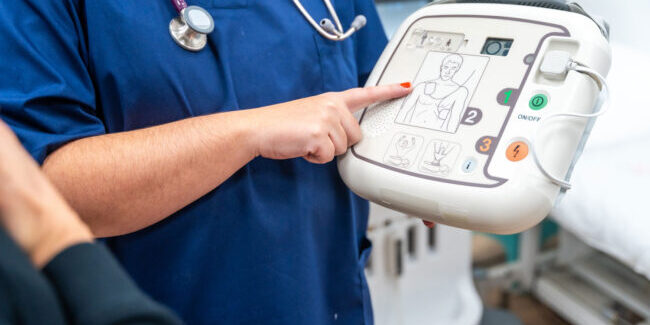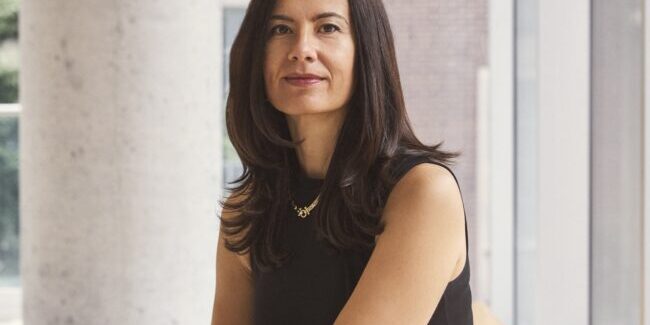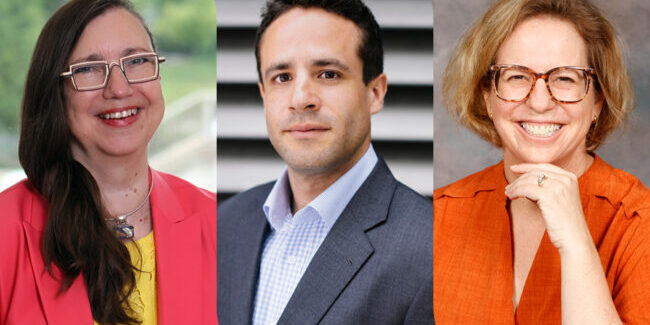The Faculties of Applied Science & Engineering, Dentistry and Medicine recently gave the Institute of Biomaterials and Biomedical Engineering (IBBME) the perfect golden anniversary gift. IBBME Director Paul Santerre, along with Dean Cristina Amon of the Faculty of Applied Science & Engineering, Dean David Mock of the Faculty of Dentistry, and Dean Catharine Whiteside of the Faculty of Medicine, signed a historic document that re-affirms IBBME’s unique position as a tri-faculty Extra Departmental Unit (EDU) at U of T—and a world-renowned research institute.
The document, a “Memorandum of Understanding” (MOU), outlines the role and share of responsibility that IBBME and its partner Faculties will take on in the years to come. Engineering’s Acting Dean Yu-Ling Cheng said that the MOU “codifies the relationship between IBBME and its partner Faculties.” Engineering, which historically and contemporarily contributes the greatest amount of faculty members and associated resources to IBBME, will continue to take the lead role for faculty promotion and stewardship.
“We now know what everyone is contributing,” Dean Mock said. “In this document [the role of these parties] is much more clarified.”
The origins of the Institute can be traced back to 1962 when the Institute was established as a joint research endeavor between the Faculty of Medicine and two departments from the Faculty of Applied Science & Engineering. The Institute expanded and eventually merged in 1999 with the Center for Biomaterials, which was a partnership between Dentistry and Engineering, to create what we now know as IBBME. As an Institute, IBBME is an “extra-departmental unit A,” a designation that allows a remarkable degree of integration and collaboration across Faculties and disciplines to create some of the most ground-breaking research developments in the world, such as Professor Milica Radisic‘s research on generating heart tissue or Professor Jan Andrysek‘s work on developing low-cost artificial legs.
According to Professor Santerre, IBBME’s cross-disciplinary nature is the very reason for its longevity and success—a vision shared by its Faculty partners. “The very essence of IBBME is its interdisciplinary nature,” remarked Acting Dean Cheng. “Engineering concepts are in a constant dialogue with those derived from the fields of medicine and dentistry.”
For Dean Mock, IBBME’s interdisciplinary nature “goes beyond the word collaborative”: “[IBBME] is not just different disciplines collaborating, but rather is people coming together to create a single discipline.”
“Part of that collaboration,” explained Medicine’s Dean Whiteside, “has been with the hospitals as much as with the Faculties.” She highlighted the vitality and importance of IBBME’s close associations with the medical community, such as the Sunnybrook Health Sciences Centre, Mount Sinai Hospital, The Hospital for Sick Children, Holland Bloorview Kids Rehabilitation Hospital, St. Michael’s Hospital, and the University Health Network (UHN). In addition, IBBME has developed new collaborations with health research partners such as the Centre for the Commercialization of Regenerative Medicine (CCRM), the Centre for Research in Advanced Neural Implant Applications (CRANIA) and UHN’s Techna, to name a few.
Signed during a year when IBBME celebrates not only its 50th year but a year that positions its students and faculty as ranking among the top five biomedical and biomaterials programs in North America, the memorandum is a testament to IBBME and its partner Faculties’ commitment to relentlessly move forward towards a future of innovation in the field.
“We live in a world that is becoming evermore integrated. And we’re competing with the world,” Professor Santerre added.



